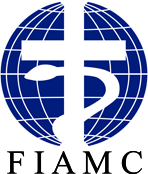A Letter From the President
Dear Colleagues and Friends of CMA (USA),

What is truth? I remember pondering this question after taking a philosophy class during my undergraduate days. I had just finished studying the Greek philosophers where we conversed with Plato and Aristotle through our peripatetic professor who loved to use the Socratic method. But I also recognized those words from Scripture (John 18:38) as we read this question of Pilate interrogating Jesus, “Quid est veritas?” What is truth? It always seemed so odd to me that Pilate, an educated Roman, should raise that question, for the answer is very simple.
That which is, in fact, is; and that which is not, in fact, is not. The words correspond to an objective reality. A lie would be the opposite: that which you say is not, in fact, is; and that which you say is, in fact, is not. It is simple. Why is it that Pilate could not understand that? A more difficult question to answer than “what is truth?” is “what is true in this particular case?” But that is not what Pilate asked.
Perhaps Pilate had become too cynical, denying any truth in the world when faced with Truth in the Person of Jesus standing before him. Or perhaps Pilate did not believe in an objective reality. Do we find people who think like Pilate in the world today? I think we do. I think we can find these people every day as we scan the headlines and confront such topics as gender affirming care, intolerance to truthful speech, or the coercion against the right of conscience.
These thoughts sat in the background of my mind as I attended CMA’s successful 91st Annual Educational Conference in Denver, Colorado last month. The theme was Searching for the Truth: Medicine, Morality, and the Media. Dr. Greg Burke, this year’s conference chair, did an outstanding job of designing the topic and arranging the speakers. It focused on the intersection of medical practice, bioethics and morality within the realm of media and social communication. Daughters of St. Paul Sr. Helena Raphael Burns opened the conference with her targeted exhortation on “The Media, the Truth & Theology of the Body.”
The use of the media can certainly be a two-edged sword. Questions reverberated. How do you communicate truth through the media in this day and age? How do we make the best of it by shining a “Light in the Darkness: Defending Scientific Truth in the Public Square,” as Dr. David Hilger and Tom Venzor, J.D. discussed? EWTN’s Michael Warsaw spoke on “Communicating the Truth in a Post-Truth World” which raises the concern can truth even be understood as pointing to an objective reality in our culture?
Not all truth which carried weight at the conference directly presented scientific evidence. There were talks on “Music and Medicine: An Ointment for Those Suffering in Body and Soul,” by Dominican Father Justin Bolger, and “Health, Healing and Suffering in Great Literature” by author Joseph Pearce. These ways of expressing truth drew heavily from historical culture in revealing the truths of humanity. We also witnessed the formal signing of an agreement between Benedictine College and those from Catholic Healthcare International to build the forthcoming Saint Padre Pio Institute for the Relief of Suffering, School of Osteopathic Medicine at Benedictine College.
If you missed the conference this year and find the idea of truth and media of interest, you can obtain access to the talks here. You will not be disappointed. As the mainstream media keeps its focus on controversial and ethically challenged topics in medicine, we as CMA members will keep our eyes on truth in the media.
Truth in medicine spans the globe. After the conference in Denver, ten CMA members from the U.S. traveled to Rome to participate in the 2022 Fédération Internationale des Associations de Médecins Catholiques (FIAMC) Congress. FIAMC is the international federation of Catholic Medical Association groups from around the world, and this year’s theme was Medicine: Restorative or Transformative? Physicians and physicians-in-training from across continents filled the teaching hall. Croatia, Ukraine, Portugal, Brazil, the United Kingdom, Japan, Nigeria and the Congo were some of the countries represented. By invite of FIAMC, our U.S. CMA members Drs. Jack Lane, Paul Camarata, Al Oliva, Paul Hruz, Tom McGovern, and Kate Kondratuk gave excellent presentations, as did Mr. Nick Nikas. FIAMC’s conference culminated in the celebration of the Holy Sacrifice of the Mass at St. Peter’s Basilica with Peter Cardinal Turkson, chancellor of the Pontifical Academies of Sciences.
From our presence at FIAMC, we see CMA reaching out to collaborate with international groups as we all face intrusions into our practice of Catholic medicine by various political entities and governments. We have come to realize that the battles we are fighting here on abortion, rights of conscience, or the dangers of hormonal and surgical “treatments” for gender dysphoria are also being battled by our sister Catholic medical associations across the globe. If we are truly living in a “post-truth” world, then we have an even greater obligation to boldly speak the truth in love through the use of whatever media we may have to reach our patients and friends.
In this way, CMA can answer the question posed by Pilate to understand what truth is and to share it.
Deus vobiscum,

Craig L. Treptow, M.D.
President








